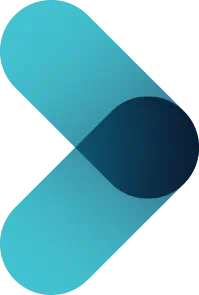GIVE NOW before 2025 ends—your gift will be doubled to help children in need. Click here to 2x your impact!

Ranked nationally in pediatric care.
Arkansas Children's provides right-sized care for your child. U.S. News & World Report has ranked Arkansas Children's in seven specialties for 2025-2026.

It's easier than ever to sign up for MyChart.
Sign up online to quickly and easily manage your child's medical information and connect with us whenever you need.

We're focused on improving child health through exceptional patient care, groundbreaking research, continuing education, and outreach and prevention.

When it comes to your child, every emergency is a big deal.
Our ERs are staffed 24/7 with doctors, nurses and staff who know kids best – all trained to deliver right-sized care for your child in a safe environment.

Arkansas Children's provides right-sized care for your child. U.S. News & World Report has ranked Arkansas Children's in seven specialties for 2025-2026.

Looking for resources for your family?
Find health tips, patient stories, and news you can use to champion children.

Support from the comfort of your home.
Our flu resources and education information help parents and families provide effective care at home.

Children are at the center of everything we do.
We are dedicated to caring for children, allowing us to uniquely shape the landscape of pediatric care in Arkansas.

Transforming discovery to care.
Our researchers are driven by their limitless curiosity to discover new and better ways to make these children better today and healthier tomorrow.

We're focused on improving child health through exceptional patient care, groundbreaking research, continuing education, and outreach and prevention.

Then we're looking for you! Work at a place where you can change lives...including your own.

When you give to Arkansas Children's, you help deliver on our promise of a better today and a healthier tomorrow for the children of Arkansas and beyond

Become a volunteer at Arkansas Children's.
The gift of time is one of the most precious gifts you can give. You can make a difference in the life of a sick child.

Join our Grassroots Organization
Support and participate in this advocacy effort on behalf of Arkansas’ youth and our organization.

Learn How We Transform Discovery to Care
Scientific discoveries lead us to new and better ways to care for children.

Learn How We Transform Discovery to Care
Scientific discoveries lead us to new and better ways to care for children.

Learn How We Transform Discovery to Care
Scientific discoveries lead us to new and better ways to care for children.

Learn How We Transform Discovery to Care
Scientific discoveries lead us to new and better ways to care for children.

Learn How We Transform Discovery to Care
Scientific discoveries lead us to new and better ways to care for children.

Learn How We Transform Discovery to Care
Scientific discoveries lead us to new and better ways to care for children.

When you give to Arkansas Children’s, you help deliver on our promise of a better today and a healthier tomorrow for the children of Arkansas and beyond.

Your volunteer efforts are very important to Arkansas Children's. Consider additional ways to help our patients and families.

Join one of our volunteer groups.
There are many ways to get involved to champion children statewide.

Make a positive impact on children through philanthropy.
The generosity of our supporters allows Arkansas Children's to deliver on our promise of making children better today and a healthier tomorrow.

Read and watch heart-warming, inspirational stories from the patients of Arkansas Children’s.
Hello.

Arkansas Children's Hospital
General Information 501-364-1100
Arkansas Children's Northwest
General Information 479-725-6800


Five Questions to Ask About Ovarian Cysts
Published date: February 15, 2024
Ovarian cysts are fluid-filled sacs near or around the ovaries. Most ovarian cysts are common, but others can cause painful symptoms for patients.
Kathryn C. Stambough, M.D., service chief for the Arkansas Children’s Hospital pediatric and adolescent gynecology clinic in Little Rock, said about 15 percent of patients are seen daily for ovarian cyst concerns. Stambough is one of only two fellowship-trained pediatric and adolescent gynecologists in the state. She is also an assistant professor in the division of pediatric and adolescent gynecology in the department of obstetrics and gynecology at the University of Arkansas for Medical Sciences.
Stambough shared the following five questions parents should ask regarding ovarian cysts:
1. Are ovarian cysts normal?
Any girl of reproductive age, meaning after their first period, can have ovarian cysts. Common ovarian cysts are physiological, created as part of the body's normal process.
There are two categories of ovarian cysts: physiologic and pathologic.
Physiologic cysts are produced with ovulation. They come and go, depending on a person's cycle. Typically, physiologic cysts are found when patients receive medical imaging for another reason.
Pathologic cysts are abnormal cell growths not tied to a menstrual cycle. These cysts are unlikely to be reabsorbed by the body. However, most are benign or not harmful in pediatric patients. It is extremely rare for a pediatric patient to have a malignant or diseased ovarian cyst.
Besides the menstrual cycle, sometimes ovarian cysts can be caused by underlying conditions, including endometriosis and polycystic ovarian syndrome (PCOS).
Physiologic cysts generally do not have symptoms and can be observed without treatment. A body typically reabsorbs a physiologic cyst in four to six weeks. A gynecologist may want to repeat imaging or pelvic ultrasound to ensure the cyst is reabsorbed.
However, if a physiologic cyst is large, has ruptured or twists and blocks blood flow to the ovaries, called ovarian torsion, physiologic cysts can cause pelvic or lower abdomen pain ranging from a heavy feeling to severe sharp pain. Symptoms can be treated with nonsteroidal anti-inflammatory drugs (NSAIDs).
With a suspected pathologic cyst, a gynecologist, parent and patient can discuss options. Observation may be recommended if the pathological cyst is small and not symptomatic. If the cyst is painful or large, laparoscopic surgery may be recommended to remove it.
Most ovarian cysts are benign. If a patient develops symptoms like nausea, vomiting, abdominal pain or avoids eating and drinking, they should be seen by a gynecologist to check for ovarian torsion.

Appointments
New and existing patients can visit our appointment hub for several ways to request an appointment, including online scheduling for many services.
Request an appointment
